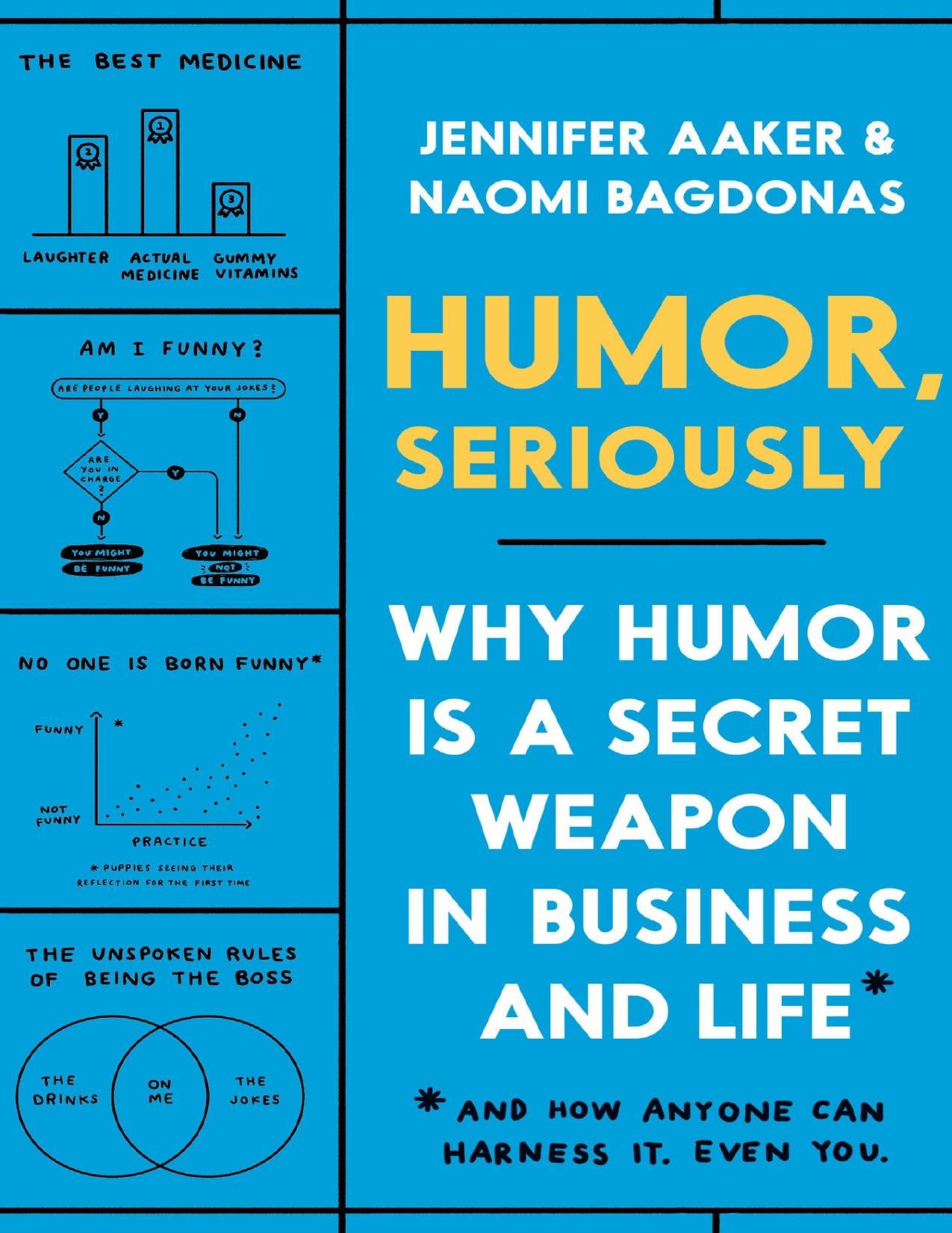Humor, Seriously by Jennifer Aaker & Naomi Bagdonas

Author:Jennifer Aaker & Naomi Bagdonas [Aaker, Jennifer & Bagdonas, Naomi]
Language: eng
Format: epub, pdf
Publisher: Crown
Published: 2021-02-02T00:00:00+00:00
The Cold Open
Thereâs a third way to set a tone with levity: an advanced form of icebreaker called the âcold open.â Cold opens are attention-grabbing, memorable, and often the favored tool of professional facilitators.
One such professional is Chris Ertel, a social scientist, strategic conversation designer (a title he invented for the work he does), and coauthor with Lisa Kay Solomon of the book Moments of Impact. One of Ertelâs all-time favorite cold opens is one he designed called the Backwards Bicycle, drawing on the viral video by engineer Destin Sandlin.
Backwards Bicycle involves a bicycle that works just like a normal bike, except when you turn the handlebars to the right, the wheel turns to the left, and when you turn the handlebars to the left, the wheel turns to the right. Youâd think that learning to ride this contraption would be a pretty simple thing to figure out, given that we all know how to ride a bicycle.
Itâs not. Hereâs how the cold open works: The participants are convened at the start of the session, where a backwards bicycle sits at the front of the room. Ertel holds out a helmet and challenges a volunteer to ride the bike from one end of the stage to the other. Inevitably, the volunteer tries and fails. Once the laughter dies down, he pauses the exercise. âWe must have a knowledge gap at play,â he explains. âYou canât ride the bike because I havenât given you the information you need.â So he explains in greater detail how the bicycle works. The volunteer nods, confident, ready to give it another go. Sheâs got this!
But she hasnât got this. A new volunteer is called, and of course heâs no more successful than the first.
Ertel again pauses the exercise and feigns confusion: âYou have all the information you needâyou know how to ride the bike in this new way. So what we have here must be a problem of motivation! I havenât incentivized you adequately.â And with that, Ertel reaches into his pocket and pulls out $200 in $20 bills. Eyes widen. âWhoâd like to give it a try now?â
One after another, grown men and women climb onto a bicycle and wobble about on the stage, some even toppling over. Theyâre so determined, and they try all kinds of different techniques. Some even try to cheat. Meanwhile, the room is full of laughter.
This might sound like some kind of sadistic hazing ritual, but in reality, the Backwards Bicycle is designed to illuminate a principle central to what he has been tasked with convening this group to tackle. It demonstrates, quite simply, that change is hardâeven if we know how we need to change, and even if weâre motivated to change.
In his debrief, Ertel thoughtfully harvests reflections from the group to weave together the story he knows they will tell. Deeply ingrained patterns of thinking, behavior, and process underlie the challenge of the dayâand this group cannot expect their triumphant ride into the sunset to come without sustained commitment and setback.
Download
Humor, Seriously by Jennifer Aaker & Naomi Bagdonas.pdf
This site does not store any files on its server. We only index and link to content provided by other sites. Please contact the content providers to delete copyright contents if any and email us, we'll remove relevant links or contents immediately.
Still Foolin’ ’Em by Billy Crystal(36259)
Spell It Out by David Crystal(36021)
The Great Music City by Andrea Baker(31250)
Professional Troublemaker by Luvvie Ajayi Jones(29571)
Trainspotting by Irvine Welsh(21487)
Call Me by Your Name by André Aciman(20350)
We're Going to Need More Wine by Gabrielle Union(18951)
The Secret History by Donna Tartt(18808)
Cat's cradle by Kurt Vonnegut(15155)
Ready Player One by Cline Ernest(14494)
Molly's Game by Molly Bloom(14049)
Bombshells: Glamour Girls of a Lifetime by Sullivan Steve(13952)
The Goal (Off-Campus #4) by Elle Kennedy(13471)
Leonardo da Vinci by Walter Isaacson(13148)
4 3 2 1: A Novel by Paul Auster(12263)
The Social Justice Warrior Handbook by Lisa De Pasquale(12126)
The Break by Marian Keyes(9289)
Crazy Rich Asians by Kevin Kwan(9147)
Adultolescence by Gabbie Hanna(8836)
